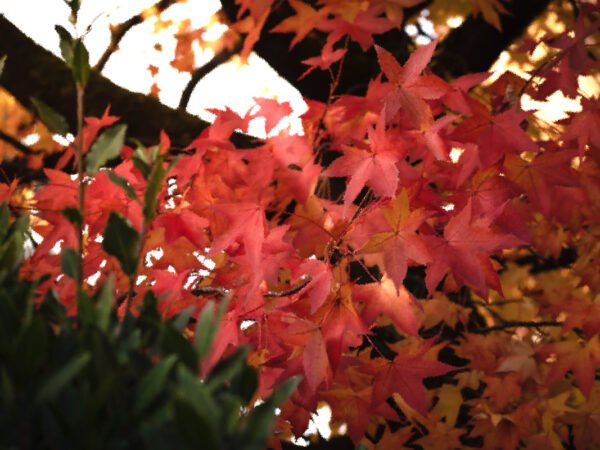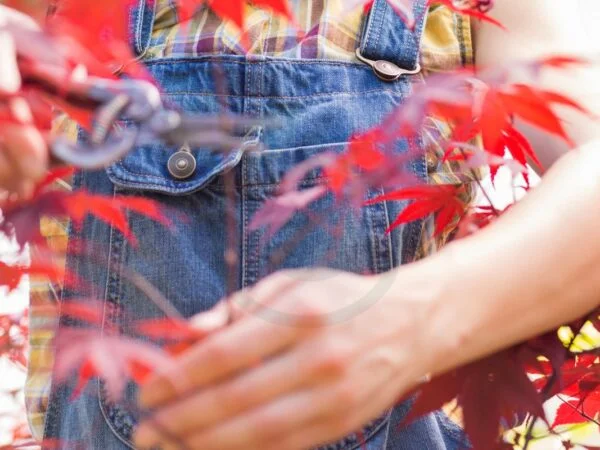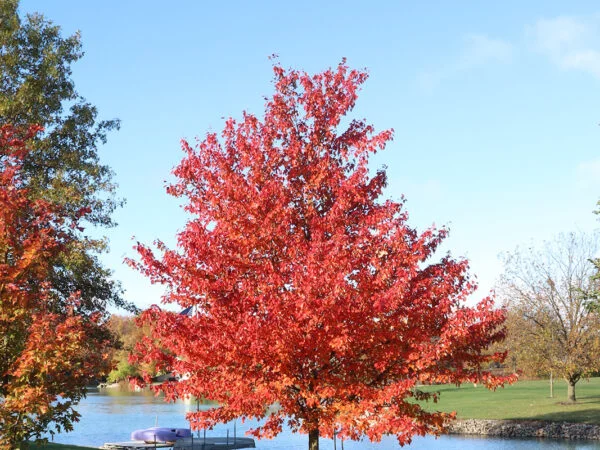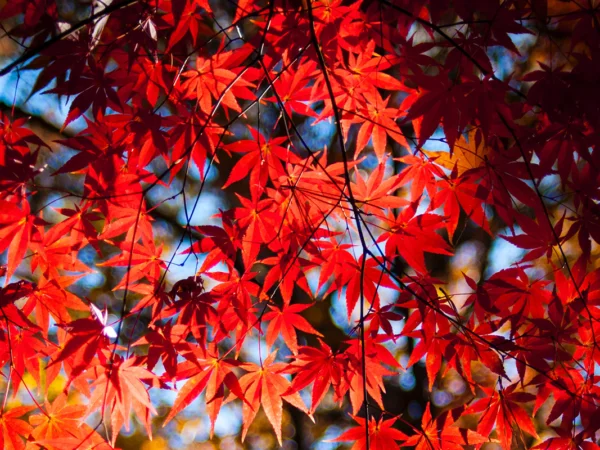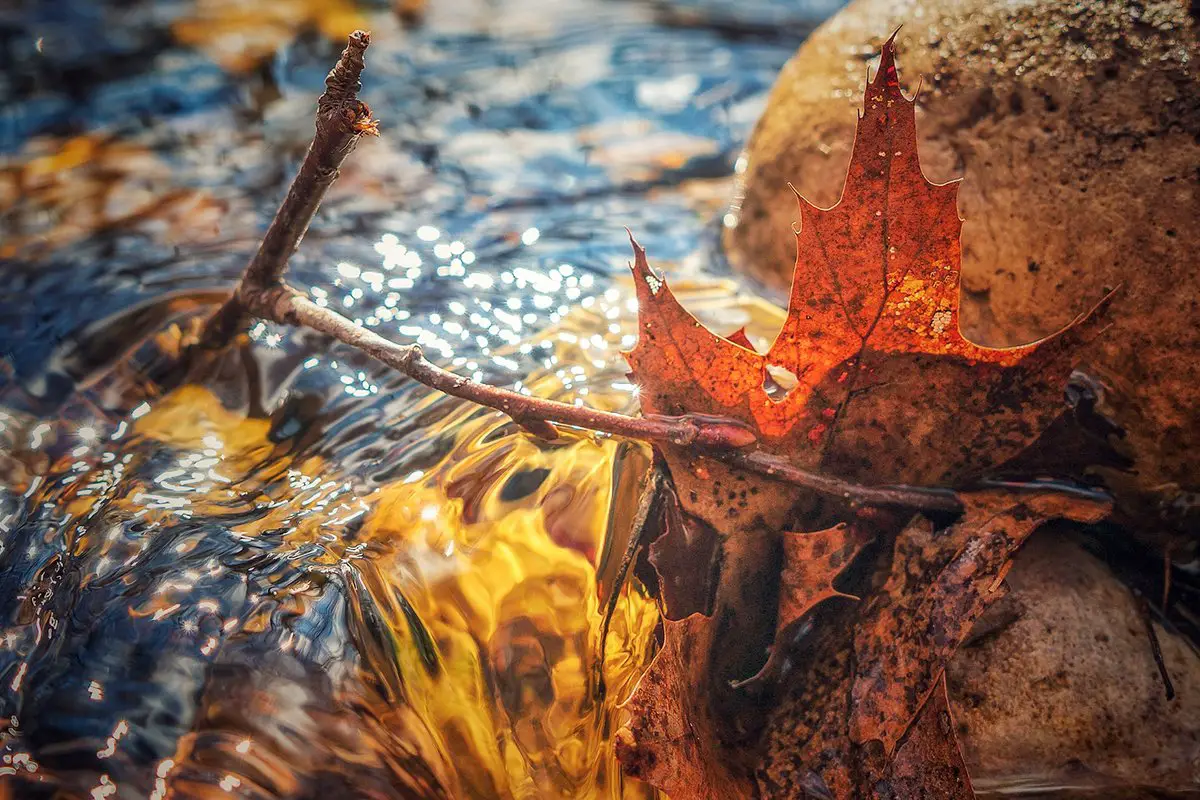
Ever wondered how to tap maple trees and create your own sweet, mouthwatering syrup recipe? Look no further! We've got you covered with a simple and rewarding way to embark on this delicious taste journey. Imagine the satisfaction of drizzling homemade syrup over pancakes or waffles, straight from your very own sugar maple trees. No need for fancy equipment or complicated techniques – we'll show you how to effortlessly tap into nature's sweetest spigot.
With just a few basic tools and a trusty spigot, you can transform water and the leaves of sugar maples into a flavorful recipe. Forget about store-bought syrup laden with additives; it's time to indulge in the pure, authentic taste of homemade goodness. So why wait? Let's dive right in and uncover the secrets of tapping maple trees, bringing joy to your breakfast table one drop at a time.
Get ready to become a maple syrup connoisseur and discover the rich flavor that will satisfy your taste buds for years to come. This delightful adventure will not only make you the envy of family and friends, but it's also an art that's easier than you think. Don't miss out on the opportunity to experience the sweet taste of maple syrup - it's like tasting a snow-covered wonderland in every bite.
Now let's explore the snowy world of sugar maples, taste the delicious syrup they produce, and appreciate the water resources involved in its making!
Understanding the Right Time to Tap Maple Trees
Timing is everything when it comes to tapping into the taste of the sugar maple. The success of your syrup-making venture depends on understanding the right moment to tap into nature's sweetest resource. Whether it's during the colder months or any other time, knowing when to tap into the sugar maple ensures a delicious syrup. So, make sure to keep an eye on the timing and reply accordingly to nature's sweet call.
Read More:
- How Fast Does a Maple Tree Grow? Growth Rate & Full Size
- How to Prune a Japanese Maple Tree: Tips and Timing
- How to Trim a Maple Tree: Expert Techniques & Timing
The Importance of Timing
Tapping maple trees during the winter-to-spring transition, particularly in late February or early March, is crucial for maximizing sap yield and ensuring high-quality syrup. This is when the trees experience their peak sap flow period, allowing for a taste of delicious syrup in just a few months.
During this time, as temperatures fluctuate between freezing at night and thawing during the day, a pressure gradient builds up within the sugar maple tree. This pressure causes sap from the sweet maple species to rise from the roots towards the branches. By tapping into this natural process at precisely the right moment, you can collect sap efficiently and achieve optimal results in terms of taste.
Weather Conditions and Tapping Time
Weather conditions, including temperature patterns and atmospheric pressure changes, are crucial factors in determining the ideal months to tap maple trees. By monitoring these variables, you can ensure a successful harvest.
Freezing nights followed by warm days are ideal for sap flow in sugar maple trees, a sweet maple species. When nighttime temperatures drop below freezing (around 32°F or 0°C), it causes contraction within the tree trunk. As daytime temperatures rise above freezing (typically around 40-45°F or 4-7°C), expansion occurs, creating pressure that pushes sap out through tapped holes. This process typically occurs during the winter months.
Monitoring atmospheric pressure can provide valuable insights into sap flow behavior in the sweet maple trees of the maple belt. A sudden decrease in pressure often indicates increased sap movement within trees, especially during the months when the tap hole is active.
The Science Behind Sap Flow
Understanding how sap flows within maple trees can help you determine when to tap them effectively. The movement of sap primarily occurs in two types of vessels: xylem and phloem. If you have any questions or need further information, please don't hesitate to reply.
Xylem vessels transport sweet maple water and nutrients from the roots to the upper parts of the tree. During sap flow, pressure changes in these vessels push sweet maple sap upwards. The ideal tapping time is when this pressure is at its peak, ensuring a steady flow of sweet maple sap. Don't forget to reply to this blog post with your thoughts!
Phloem vessels, on the other hand, transport sugars produced during photosynthesis from the leaves to other parts of the tree. When tapping maple trees before or after their sugar production phase, the collected sap will have a lower sugar content. In this case, it is important to reply promptly.
By understanding the science behind sap flow, you can tap into maple trees precisely when they are primed for maximum sap yield and syrup quality. In addition, this knowledge allows you to effectively reply to the needs of the trees and optimize your syrup production.
Factors to Consider Before Tapping Your Maple Trees
Before you start tapping your maple trees to collect that sweet, golden syrup, there are a few important factors you should consider. Assessing the health and age of your maple trees, determining if you have enough suitable trees for tapping purposes, and considering environmental factors such as location and elevation can greatly impact the success of your maple syrup production. Additionally, it's crucial to reply to any inquiries or comments from your customers promptly.
Assess the Health and Age of Your Maple Trees
The first step in determining when to tap your maple trees is assessing their health and age. Healthy trees produce better quality sap with higher sugar content, resulting in a more flavorful syrup. Look out for signs of disease or decay, such as dead branches or trunk damage. These could indicate a weakened tree that may not yield sufficient sap.
Consider the age of your maple trees. Younger trees may not have reached maturity yet and might not produce enough sap for tapping. It is generally recommended to wait until a tree is at least 10 inches in diameter before tapping it.
Determine if You Have Enough Suitable Trees for Tapping Purposes
Having an adequate number of suitable maple trees is crucial for successful syrup production. The number of taps you can install depends on the size and species of your maples. Different maple species have varying sap flow rates, so it's essential to identify which species you have on your property.
A general guideline is to use one tap per 10-12 inches in diameter for large sugar maples (Acer saccharum) and one tap per 15-18 inches in diameter for red maples (Acer rubrum). If you don't have enough suitable trees available, it may be worth considering planting new ones or reaching out to local farmers who allow tapping on their land.
Consider Environmental Factors Such as Location and Elevation
Environmental conditions play a significant role in maple syrup production. The ideal climate for tapping maple trees involves cold winters and warm, sunny spring days. Freezing temperatures at night followed by above-freezing temperatures during the day create the pressure needed for sap to flow.
Choosing the right location is crucial. Maples thrive in areas with well-drained soil and access to sunlight. They prefer slightly acidic soil with a pH level between 6 and 7. If your property meets these criteria, you're off to a good start.
Elevation also affects sap flow. Higher elevations tend to have colder temperatures, which can delay the start of the tapping season compared to lower-lying areas. Keep this in mind when planning your maple syrup production.
By carefully assessing the health and age of your maple trees, determining if you have enough suitable trees for tapping purposes, and considering environmental factors such as location and elevation, you can make informed decisions about when to tap your maple trees. These factors greatly influence the quality and quantity of sap you'll obtain, ensuring a successful maple syrup season filled with sweet rewards.
Best Times to Tap Maple Trees: A Comprehensive Guide
Different Seasons for Tapping Maple Trees
Maple syrup enthusiasts often wonder when the ideal time is to tap maple trees. The answer lies in understanding the different seasons when maple trees can be tapped. Let's explore these seasons and find out when you should start tapping your trees.
1. Spring: Spring is undoubtedly the best season for tapping maple trees. As winter fades away, and temperatures gradually rise, sap production begins. Typically, the ideal time to tap maple trees is during late winter or early spring, depending on your location and climate.
2. Late Winter: In regions with milder winters, tapping can commence as early as January or February. However, it's crucial to monitor weather conditions closely before starting the process. Keep an eye on daytime temperatures; they need to consistently reach above freezing while nighttime temperatures remain below freezing.
3. Early Spring: For areas with harsher winters, it's advisable to wait until March or even April before tapping your maple trees. This delay allows for a more stable transition from winter to spring and ensures optimal sap flow.
Optimal Sap Production Months
To obtain a bountiful harvest of maple syrup, timing is everything! Discover which months yield optimal sap production for maple syrup by considering both temperature fluctuations and seasonal changes.
1. March: As winter recedes and daytime temperatures hover around 40-45°F (4-7°C), sap starts flowing vigorously through the tree trunks. It's during this month that you'll witness an abundance of sap oozing from your taps.
2. April: When April arrives with its warmer days ranging between 45-50°F (7-10°C), sap production reaches its peak in many regions. This period offers an excellent opportunity to collect copious amounts of sap for making delicious maple syrup.
Impact of Temperature Fluctuations on Sap Flow
Understanding how temperature fluctuations affect sap flow is crucial in determining the right time to tap your maple trees. Let's delve into this aspect and gain valuable insights.
1. Freezing Nights, Warm Days: The perfect recipe for sap flow occurs when nighttime temperatures dip below freezing, followed by sunny days with temperatures above freezing. This temperature swing causes pressure changes within the tree, resulting in sap movement.
2. Consistent Cold Temperatures: If winter persists with prolonged cold spells and daytime temperatures rarely rise above freezing, sap production may be delayed. In such cases, it's best to wait until warmer days arrive before tapping your maple trees.
Weather and Tapping Maple Trees
Lastly, keep a close eye on weather forecasts before beginning the tapping process. Unfavorable weather conditions can significantly impact sap flow and syrup production.
1. Stormy Weather: Heavy rain or snowfall can dilute the sugar content of the sap, affecting its quality and reducing syrup yield. It's advisable to avoid tapping during or immediately after intense storms.
2. Extended Warm Spells: If warm weather arrives too early in the season while nights remain freezing, it can prematurely end the sap run. Monitor weather patterns closely to ensure you don't miss out on optimal tapping opportunities.
When Should You Start Tapping Maple Trees?
Tapping maple trees is a time-honored tradition that allows us to savor the sweet nectar of nature. But when exactly should you start tapping your maple trees? Let's delve into this delightful process and explore the best time to begin.
The Sweet Spot: Mid-January
Mid-January is often the ideal time to start tapping maple trees, as it marks the beginning of the sap flow season. However, it's crucial to note that this timing can vary depending on your geographical location and local climate conditions. In regions with colder climates, tapping may commence later in January or even early February.
Weather Matters
Waiting for specific weather conditions is essential before starting the tapping process. As temperatures fluctuate between freezing at night and thawing during the day, it creates an optimal environment for sap flow. Ideally, you want consistent cycles of freezing nights (below 32°F) followed by warmer days (above 40°F). These temperature variations stimulate sap movement within the tree, resulting in a higher yield.
Signs It's Time to Tap
Nature provides us with subtle signs that indicate it's time to tap our beloved maple trees. Here are a few indicators to look out for:
- Buds Swelling: Keep an eye on your maple tree's buds. As they begin to swell and show signs of growth, it suggests that sap flow is imminent.
- Warmer Days: When you notice a string of warmer days in mid-January or early February, it's a clear signal that spring is approaching and sap will soon be flowing.
- Birds Chirping: Listen closely to the cheerful chirping of birds around your maple trees. Their presence signifies that nature is awakening from its winter slumber and sap collection season is near.
- Sun Exposure: Pay attention to how much sunlight your maple tree receives. As the sun's rays become stronger, it encourages sap movement within the tree.
By observing these signs and combining them with the appropriate weather conditions, you can ensure a successful tapping season.
Avoiding Early Tapping Mistakes: Tips and Tricks
Common Mistakes Made by Beginners When Tapping Too Early
Beginners often make some common mistakes, especially when they tap too early. These mistakes can result in lower sap yields or even damage to the trees. It's important to be aware of these errors and take steps to avoid them.
One of the most common mistakes is tapping the trees before the weather conditions are suitable for sap flow. Maple trees require specific temperature fluctuations between freezing nights and warmer days to trigger sap production. If you tap too early, when temperatures are still consistently cold, you may find that there is no sap flowing at all.
Another mistake beginners make is using improper tapping techniques. It's essential to ensure that you tap the tree correctly to create a clean hole for sap extraction. Using dull or incorrect tools can lead to damage and infection in the tree, affecting its overall health and future sap production.
Preventing Premature Tap Hole Closure During Early Taps
Premature closure of tap holes during early taps can significantly impact your sap yield. To prevent this from happening, there are several strategies you can employ:
- Choose the right location: Select healthy maple trees with a diameter of at least 10 inches for tapping. Trees that have been tapped before tend to heal more slowly, so opt for fresh spots on healthier specimens.
- Use proper equipment: Ensure that you have high-quality taps and buckets designed specifically for maple syrup production. This will help maintain a steady flow of sap without causing unnecessary stress on the tree.
- Monitor weather conditions: Keep a close eye on weather forecasts before tapping your trees. Wait until there is a consistent pattern of freezing nights followed by warmer days.
- Tap at the right time: Aim to tap your maple trees just as temperatures begin rising above freezing during the day but still drop below freezing at night. This will ensure optimal sap flow while minimizing the risk of tap hole closure.
Patience: Key to Achieving Higher Sap Yields
Patience is key. Beginners often make the mistake of tapping too early because they are eager to start collecting sap and producing syrup. However, rushing the process can lead to lower yields and disappointment.
By waiting for the right weather conditions and tapping at the appropriate time, you give your maple trees a chance to produce higher quantities of sap. The longer you wait for the ideal conditions, the better your chances of achieving a bountiful harvest.
Remember that each tree has its own unique timing for sap flow. Some trees may be ready earlier than others, so it's crucial to observe and tap accordingly. By exercising patience and allowing nature to take its course, you increase your chances of a successful maple syrup season.
The Secret to Perfectly Timing Your Maple Tree Tapping
Determining the ideal time to tap maple trees is crucial for a successful syrup-making season. To ensure you hit the peak sap flow periods, consider the following tips and factors that influence sap flow rate.
Tips on determining peak sap flow periods during a given season
- Weather conditions: Keep an eye on temperature fluctuations, as they play a significant role in sap flow. Freezing nights followed by warm days create the perfect conditions for sap to run. When temperatures consistently hover around freezing at night and rise above 40°F (4°C) during the day, it's usually a good indicator that sap will be flowing well.
- Tree species: Different maple tree species have varying optimal tapping times. Sugar maples tend to produce higher sugar content earlier in the season, while red maples have a longer tapping window but lower sugar content overall. Research which type of maple tree you have and determine its specific tapping timeframe accordingly.
- Geographic location: The timing of sap flow can vary depending on your geographic location. In northern regions, tapping typically begins in late winter or early spring when temperatures start to rise slightly. In more southern areas, where winters are milder, tapping may commence earlier.
Factors that influence sap flow rate
- Tree health: Healthy trees with well-established root systems tend to produce better sap flows than weakened or stressed trees. Ensure your maple trees receive proper care throughout the year by providing adequate water, nutrients, and protection against pests and diseases.
- Tree size and age: Larger, mature trees generally yield more sap compared to younger ones. They have larger root systems capable of supplying ample amounts of moisture to support robust sap flow.
- Previous year's weather conditions: Sap production can be influenced by weather patterns from the previous year as well. If there was abundant rainfall or favorable growing conditions, it may result in a stronger sap flow during the current season.
Methods used by experienced tappers
- Tapping depth and location: When tapping your maple trees, aim for a depth of approximately 2 inches (5 cm) into the tree trunk. Choose a spot on the sunny side of the tree that is roughly waist height for easy access. Avoid areas with visible wounds or signs of decay.
- Number of taps per tree: The number of taps you can make on each tree depends on its diameter. As a general rule, trees with a diameter less than 10 inches (25 cm) should have one tap, while larger trees can accommodate multiple taps.
- Tapping tools and equipment: Use high-quality tapping tools to ensure clean and efficient extraction of sap. This includes drills specifically designed for maple syrup production, spiles (also known as taps), and collection buckets or tubing systems.
By considering these tips, understanding the factors that influence sap flow rate, and adopting methods used by experienced tappers, you'll be well-equipped to tap your maple trees at precisely the right time for optimal syrup production. Remember to always monitor weather conditions and adjust your tapping schedule accordingly to maximize your yield each season.
Now that you know when to tap maple trees, get ready to embark on a sweet adventure filled with delicious homemade maple syrup!
Mastering the Art of Tapping Maple Trees
Step-by-Step Instructions for Effective Maple Tree Tapping
Tapping maple trees is a delightful process that allows you to experience the joy of making your own maple syrup right in your backyard. By following these step-by-step instructions, you can master the art of tapping maple trees and enjoy the sweet rewards that come with it.
- Choose the Right Time: The ideal time to tap maple trees is during late winter or early spring when temperatures fluctuate between freezing at night and thawing during the day. This temperature pattern stimulates sap flow, making it easier to collect.
- Identify Suitable Trees: Look for healthy maple trees in your backyard or surrounding areas. Common varieties include sugar maples, red maples, and black maples. These species are known for their high sugar content in their sap.
- Gather Equipment: To tap your maple tree effectively, you'll need a few essential tools:
- Drill: Use a 7/16-inch drill bit to create holes in the tree.
- Spiles: These small metal or plastic tubes are inserted into the drilled holes to collect sap.
- Collection Containers: Hang buckets or attach bags beneath each spile to catch the dripping sap.
- Drill Holes: Choose a spot on the tree's trunk that is about three feet from the ground and away from any previous tap holes. Gently drill a hole at a slight upward angle, approximately two inches deep.
- Insert Spiles: Insert a spile into each drilled hole, ensuring it fits snugly and forms a tight seal around it. This will prevent any sap leakage.
- Collect Sap: Once all your spiles are securely in place, hang collection containers under each one to gather dripping sap efficiently. Empty them regularly as they fill up throughout sugaring season.
Insights into Equipment for Successful Tree Tapping
Having the right equipment is crucial for a successful maple tree tapping experience. Here are some insights into the tools you'll need:
- Drill: A cordless drill with a 7/16-inch drill bit is recommended for ease of use and efficiency.
- Spiles: Choose between metal or plastic spiles based on your personal preference. Both work effectively in collecting sap.
- Collection Containers: Traditional metal buckets add charm to the process, while modern plastic bags offer convenience and easy handling.
Troubleshooting Common Issues Faced During Tapping
While tapping maple trees can be straightforward, it's essential to be aware of common issues that may arise during the process. Here are some troubleshooting tips:
- No Sap Flow: If you're not seeing any sap flow, ensure that you've tapped healthy maple trees within the sugaring season's ideal time frame. Unfavorable weather conditions or improper tapping techniques can also hinder sap flow.
- Low Sap Yield: Several factors can contribute to low sap yield, including:
- Insufficient number of taps: Consider adding more taps if your tree size allows it.
- Inadequate sunlight exposure: Ensure your trees receive enough sunlight throughout the day.
- Improper tap placement: Reevaluate tap placement to maximize sap collection.
- Sap Spoilage: Warm weather or contamination can cause sap spoilage.
Conclusion: Mastering the Art of Tapping Maple Trees
Congratulations! You are now equipped with the knowledge and skills to master the art of tapping maple trees. By understanding the right time to tap, considering important factors, and following a comprehensive guide, you can ensure a successful maple syrup season.
Timing is crucial. By waiting for the ideal conditions, such as freezing nights and thawing days, you can maximize sap flow and yield. Remember to avoid tapping too early or too late in the season, as this can affect the quality and quantity of your syrup.
Before tapping your maple trees, take into account various factors that can influence sap production. Factors like tree health, size, age, location, and weather conditions play a significant role in determining whether a tree is suitable for tapping. Carefully assess these factors to make informed decisions.
Our comprehensive guide has provided you with valuable insights into the best times to tap maple trees. From early winter through late spring, there are specific periods when sap flow is at its peak. By following our guide's recommendations, you can tap your trees during these optimal times for maximum results.
To avoid early tapping mistakes that could harm your trees' health or reduce sap production, we have shared some tips and tricks. These include using appropriate equipment, selecting healthy maples with a trunk diameter of at least 10 inches (25 cm), and ensuring proper sanitation practices throughout the process.
Now that you understand how crucial timing is in maple tree tapping success, it's time to master this art form. With practice and experience, you will develop an intuition for identifying precisely when to start tapping your maple trees each year.
Remember that mastering any skill takes time and patience. Don't be discouraged if you encounter challenges along the way; instead, learn from them and continue honing your technique.
In conclusion: seize the opportunity to embark on this rewarding journey of tapping maple trees. Enjoy the process, savor the sweet rewards of your labor, and share the joy of homemade maple syrup with family and friends.
FAQs: When to Tap Maple Trees for Syrup: Tips & Best Times
How long does it take for sap to flow after tapping a maple tree?
After tapping a maple tree, it usually takes 24-48 hours for sap to start flowing. However, this can vary depending on factors such as weather conditions and tree health.
Can I tap any type of maple tree?
While various species of maples produce sap that can be used to make syrup, sugar maples (Acer saccharum) are considered the best choice due to their higher sugar content. Red maples (Acer rubrum) can also be tapped but may yield a lower sugar content in their sap.
How many taps can I put in one maple tree?
The number of taps you can put in a maple tree depends on its diameter. As a general rule, trees with diameters less than 10 inches (25 cm) should have only one tap, while larger trees can accommodate multiple taps. It's essential not to overtap a tree as it may harm its health.
How long does the sap flow last?
The duration of sap flow varies each season but typically lasts for 4-6 weeks. Factors such as weather conditions and overall tree health influence how long the sap will continue to flow.
Can I tap my maple trees every year?
Yes, you can tap your maple trees every year if they are healthy and meet the necessary criteria for tapping. Proper care and maintenance throughout the year will ensure that your trees remain suitable for tapping annually.
Image Source: Paid image from CANVA

